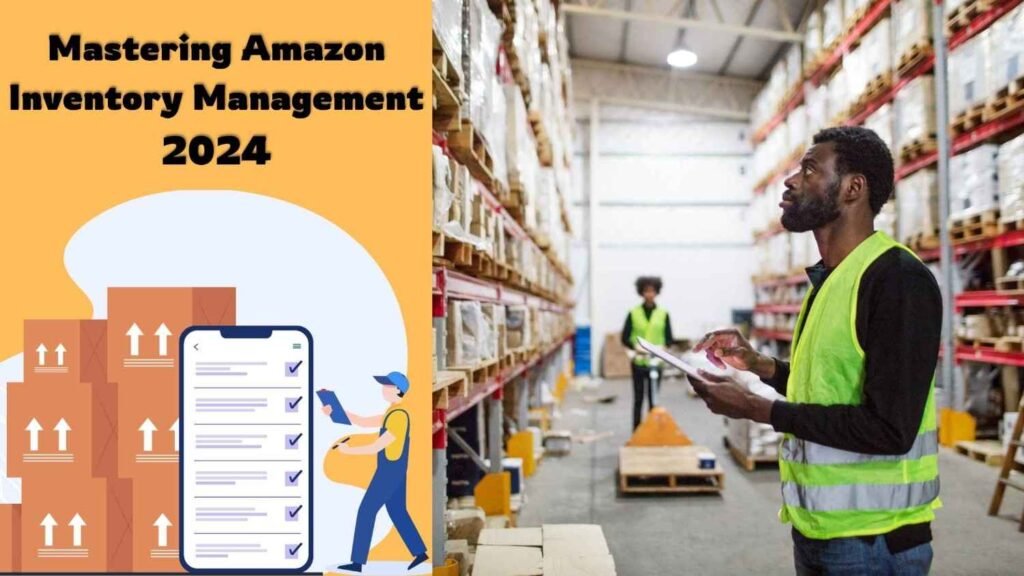Introduction
Managing inventory on Amazon can feel like walking a tightrope On one side, there’s the fear of running out of stock and disappointing customers, and on the other, the risk of overstocking and incurring high storage fees. Navigating this balance successfully is crucial for any Amazon seller aiming to maximize profitability and enhance customer satisfaction. This article delves into effective strategies and tools for mastering Amazon inventory management.
Understanding the Basics of Amazon Inventory Management
Inventory management is the strategic process of sourcing, storing, and selling inventory. On Amazon, the stakes are higher due to the platform’s competitive nature and customer expectations for fast delivery.
Why Good Inventory Management Matters
- Customer Satisfaction: Ensuring products are available when customers need them leads to positive seller feedback and repeat purchases.
- Cash Flow Optimization: Proper inventory control helps maintain healthy cash flow by balancing supply and demand efficiently.
- Storage Cost Reduction: Avoiding overstocking minimizes Amazon’s storage fees, particularly during peak seasons.
Best Practices for Inventory Management on Amazon
Forecasting Demand Accurately
Predicting future sales is essential to manage inventory effectively. Accurate demand forecasting can prevent both stockouts and overstocking.
- Historical Sales Data: Leveraging past sales data can provide insights into seasonal trends and fluctuations.
- Market Trends: Keeping an eye on industry trends and consumer behavior helps anticipate changes in demand.
- Amazon Tools: Tools like Amazon’s Inventory Performance Dashboard offer valuable data for making informed decisions.
Implementing Efficient Reordering Systems
Establishing a robust reordering system ensures you replenish your stock before it runs out without tying up too much capital in inventory.
- Just-In-Time (JIT) Inventory: This approach minimizes warehousing costs by ordering products only as needed.
- Economic Order Quantity (EOQ): EOQ helps determine the ideal order quantity that minimizes total inventory costs, including ordering, holding, and shortage costs.
- Reorder Point (ROP): Calculated based on lead time demand, ROP signals when it’s time to reorder to avoid stockouts.
Leveraging Technology and Tools
Amazon sellers have access to numerous tools that streamline inventory management, ensuring efficiency and accuracy.
FBA (Fulfillment by Amazon)
Fulfillment by Amazon (FBA) allows sellers to store their products in Amazon’s fulfillment centers. Amazon takes care of storage, shipping, and customer service.
- Benefits of FBA: Quick delivery times, customer trust, and reduced operational burdens.
- FBA Fees: Includes fulfillment fees and monthly inventory storage fees. Understanding these costs is vital for budgeting.
Third-Party Inventory Management Software
Third-party software tools provide advanced functionalities such as multi-channel management, real-time tracking, and automated reordering.
- Inventory Lab: Offers comprehensive inventory management, and profitability tracking, and integrates seamlessly with Amazon.
- RestockPro: Helps manage restocking, forecast demand, and track supplier performance.
“Effective utilization of inventory management tools and software can significantly enhance operational efficiency and reduce manual errors.”
Overcoming Common Challenges
Even with the best tools and strategies, challenges are inevitable. Being prepared to tackle these challenges head-on is key.
Handling Seasonality
Sales can fluctuate based on seasons, holidays, or specific events. Misjudging these variations can lead to stockouts or excessive inventory.
- Seasonal Analysis: Review past data to understand seasonal patterns and adjust your inventory accordingly.
- Flexible Supply Chain: Establish relationships with suppliers who can accommodate quick adjustments to order volumes.
Dealing with Long Lead Times
Long lead times can complicate inventory management, especially when dealing with international suppliers.
- Buffer Stock: Maintaining a buffer stock can cushion the impact of unexpected delays.
- Local Suppliers: When possible, sourcing from local suppliers can reduce lead times significantly.
Conclusion
Effective inventory management on Amazon involves a delicate balance of demand forecasting, efficient reordering, and leveraging advanced tools. By ensuring you’re neither overstocked nor understocked, you can keep customers happy while optimizing your cash flow and minimizing costs. Remember, the key to mastering Amazon inventory management lies in continuous learning and adaptation to evolving market trends and consumer behavior.
“Stay proactive, keep learning, and make data-driven decisions to excel in Amazon inventory management.”
This comprehensive guide is designed to help you navigate the complexities of Amazon inventory management, equipping you with the knowledge and tools needed to thrive in the competitive marketplace.


